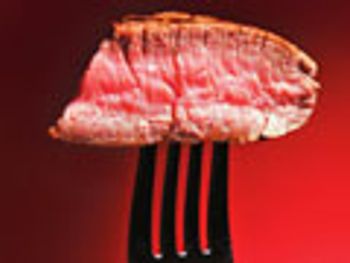
The Column
The Column spoke to Ana Maria Garcia Campania about recent food scares and the development of techniques to monitor veterinary drug residues in foods for human consumption.

The Column
The Column spoke to Ana Maria Garcia Campania about recent food scares and the development of techniques to monitor veterinary drug residues in foods for human consumption.

The Column
Diesel exhaust fumes can rapidly degrade the floral odours used by honeybees (Apis melifera) to identify flowering plants, according to results published by scientists at the University of Southampton (Southampton, UK) in the journal Scientific Reports.1

The Column
A fully automated solution was developed for the determination of THC and its metabolites THC–OH and THC-COOH in serum.

The Column
Market Trends & Analysis Market Profile: Laboratory Information Management Systems

The Column
A review of the 7th International Symposium on Packed Column SFC (SFC 2013) that was held in Boston, Massachusetts, USA, on 10–12 July 2013.

The Column
Potentially dangerous levels of the methamphetamine analogue, N, ??diethyl?phenylethylamine (N, ? -DEPEA), have been detected in a widely available dietary supplement using ultrahigh-pressure liquid chromatography coupled to mass spectrometry (UHPLC–MS). The supplement, Craze, can be bought in the USA and from on-line retailers. The findings have been published in the journal Drug Testing and Analysis by a team of scientists from Harvard Medical School (Massachusetts, USA), NSF International (Missouri, USA), and the National Institute for Public Health and the Environment Health Protection Center (Bilthoven, The Netherlands).1

The Column
Engineered nanoparticles released into the environment may affect the growth of agriculturally important crops, according to a new study published in the journal of Environmental Science and Technology.1 Scientists from The Connecticut Agricultural Experiment Station (Connecticut, USA) investigated the effect of multiwalled carbon nanotubes (MWCNTs) and C60 fullerenes on plant growth. The investigation was part of a larger project funded by the US Department of Agriculture to look at the impact of nanoparticles on agriculture. The team used gas chromatography coupled with mass spectrometry (GC?MS) in this study.